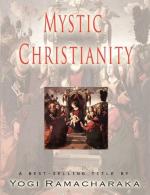The Nicene Creed was drawn up and adopted by the Council of Nice in the year A.D. 325. As originally adopted it ended with the words “I believe in the Holy Ghost,” the present concluding clauses being added by the Council of Constantinople in A.D. 381, excepting the words “and the Son,” which were inserted by the Council of Toledo, A.D. 589. It is as follows:
“I believe in one God, the Father, Almighty, Maker of Heaven and earth, and all things visible and invisible; and in one Lord Jesus Christ, the only-begotten Son of God, begotten of his Father before all worlds, God of God, Light of Light, very God of very God, begotten, not made, being of one substance with the Father, by whom all things were made; who for us men and for our salvation came down from heaven and was incarnate by the Holy Ghost of the Virgin Mary, and was made man, and was crucified also for us under Pontius Pilate; he suffered and was buried and the third day he rose again according to the scriptures and ascended into heaven, and sitteth on the right hand of the Father; and he shall come again with glory to judge both the quick and the dead, whose kingdom shall have no end. And I believe in the Holy Ghost, the Lord and Giver of Life, who proceedeth from the Father and the Son, who with the Father and Son is worshipped and glorified, who spoke by the prophets; and I believe in one catholic and apostolic church; I acknowledge one baptism for the remission of sins, and I look for the resurrection of the dead and the life of the world to come.”
Let us now briefly examine the principal statements of these creeds, which were compiled centuries after Jesus’ death, viewing them by the light of Mystic Christianity.
“I believe in one God, the Father Almighty, Maker of heaven and earth, and all things visible and invisible.”—(Nicene Creed.)
The form of the above fundamental principle of Christian belief is taken from the Nicene Creed, which is somewhat fuller than the similar declaration in the Apostles’ Creed. It requires no comment. It is a statement of belief in a One Creative Power, from which all things have proceeded. There is no attempt made to “explain” the nature of the Absolute, or to endow it with any of the human attributes which theologians have delighted in bestowing upon the One. It merely asserts a belief in the existence of One Supreme Being—which is all that is possible to man—all else is ignorant impertinence.
“And in Jesus Christ his only Son our Lord, who was conceived by the Holy Ghost.”—(Apostles’ Creed.)
“And in one Lord Jesus Christ, the only begotten Son of God, begotten of his Father before all worlds, God of God, Light of Light, very God of very God, begotten, not made, being of one substance with the Father.”—(Nicene Creed.)




